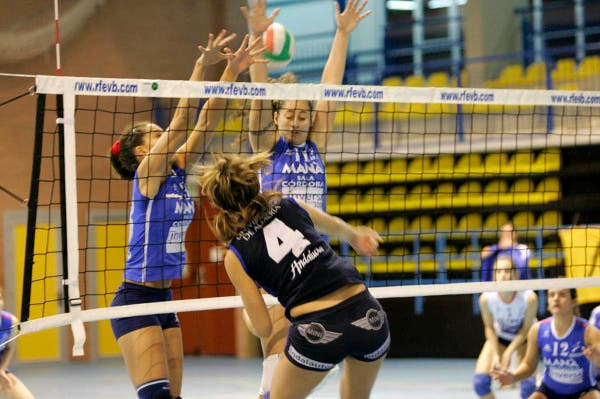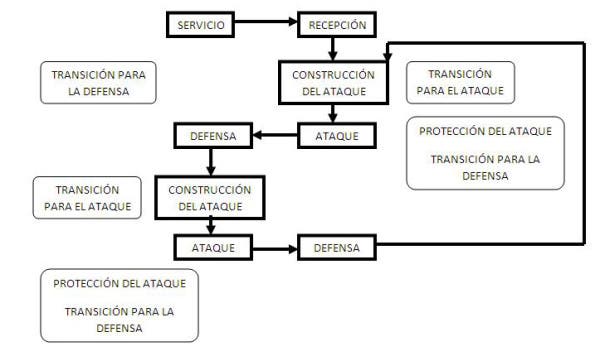When watching a volleyball match, the great initial similarity in the course of each play is striking, in their actions and the order in which they appear.
- All plays start with a serve. If the service goes to the other field, the opposing team will try to return it through a series of actions that have the objective that the last action taken can be carried out in the best conditions so that the ball is sent to the ground of the opposite field. In addition, said team must prepare for a possible blocking of the ball by the opposing team.
- The opposing team prepares to counteract the sending of the ball into their court by means of a first line of defense (blocking), while the rest of the players form the second and third lines of defense.
- From there, two situations can occur in relation to the possibilities of control of the ball by one or the other team. But when one of the two teams tries to send the ball back into the opponent’s court, many new possibilities for continuation of play appear. This process can have a continuous outcome, in a supposed case of uninterrupted continuation and without end of play.
A large number of authors proposed and developed different ways of understanding the development of a volleyball play (Arie Selinger, 1986; IG Herrera, 1988; D. Beal, 1990; Max Meier, 1994; Moutinho, 1994; DP Coelho, 2000 … ), but not all possible game sequences are present in the flow charts they propose.
Here is a summary of the studies on game structuring presented by the most important authors:
|
FROM THE POINT OF VIEW OF THE TEAMS |
AUTHOR |
DETERMINATION |
CONTINUATION |
|
FRASSER 1988 |
According to SF and SC With and without balloon. Double start of the play. Transitions | Sequence of moments and phases of the game: Cyclical and idyllic. | |
|
D. BEAL 1990 |
With and without the ball. A single start of the play. Transitions | Cyclical and sequential model of the game. | |
|
BADIN 1993 |
According to SF and SC Both teams. Direct and indirect opposition. Transitions | Game logic scheme: Continuous and permanent. | |
|
MOUTINHO 1994 |
According to SF and SCCon and without the ball. Double start of the play. Transitions. Support = protection from attack. | Game sequence of moments: Cyclical and idyllic. | |
|
M. MEIER 1994 |
Disregarding SF and SC Transitions. Players’ situations according to functional and positional specialization. | Dynamic chronology of game actions. Last action of one team and actions of the other team (1, 2, 3, 4). |
As I have mentioned previously, none of these studies is an absolute truth, since game elements are missing; the closest thing to reality would be a combination of several of them.

The game models provide a vision of the possibilities of a play bringing us closer to its understanding. In them you can see:
- The sequences that a team performs are also understood as attack sequences, even if they begin with a reception, in defense or in support. Furthermore, there are no differences between the actions that are part of the attack and those that are part of the counterattack.
- The models described do not explicitly reflect the continuation of actions that take place from the support of the attack or the counterattack.
- The serve is not considered as its own entity and differentiated from the rest of the game sequences.
- The uninterrupted continuation of the game is made under the precept of alternative continuation of the teams from the attack and from the defense, so it does not correspond to reality.
Finally, I show the model developed by CA Moutinho (1994), from my point of view, one of the best and most complete, since it adds that there is an external structure of regular game that, from a certain moment, can be constitute circular and repetitive.

Resume
In this article we learned about the process by which the different phases of the game originate and the order in which they occur in volleyball, with the aim of facilitating the understanding and enjoyment of this sporting specialty to all people who are interested. in her.
Bibliography
- Monge Muñoz, MA The basic tactical complexes (KB) and specific (KE) in volleyball. (2003)
- Monge Muñoz, MA & Aragundi Castro, C. Volleyball and its didactics. (nineteen ninety five)